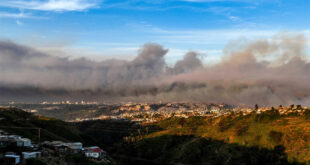HCMC is envisioning its metro routes as the axis for several underground developments in its downtown and other top urban areas.
Officials are looking for ideas for underground developments in the Thu Thiem New Urban Area and other downtown areas spanning a total of 930 ha, with malls and parking space featuring prominently in the mix.
Late last year, HCMC issued architectural management guidelines for underground space development in certain areas, including Nguyen Hue Street, Le Loi Avenue and Bach Dang Wharf.
Nguyen Hue Street, spanning 670 m, became Vietnam’s first pedestrian street in 2015. The city plans to create an underground space in the area, with the first floor as a mall and the second and third floor as parking spaces.
The first floor, which will also function as a pedestrian street, would connect the Opera House with a park running along the Saigon River. The area will have elevators and escalators near bus stations, and entrances would be located in the Le Loi-Ton That Thiep and the Ngo Duc Ke-Hai Trieu areas.
Next to the Nguyen Hue pedestrian street runs the Le Loi Avenue for around a kilometer from the Opera House to the roundabout in front of the Ben Thanh Market. The area has been barricaded for years for the construction of HCMC’s first metro line. There are already three underground stations beneath the avenue for the metro line.
In 2016, the city called for the creation of an underground mall in the area with a total cost of over VND6.8 trillion ($296.9 million), as well as the reconstruction of the B1 floor of the Ben Thanh metro station.
However, the project is yet to be launched due to a lack of capital and investors.
In the Ben Thanh Wharf area, the Me Linh Park was upgraded earlier this year. In accordance with the plan, Ton Duc Thang Street would move underground along with parking spaces along the park, while areas above ground would be reserved for electric vehicles and pedestrians. Various shops and restaurants will also be situated underground.
‘A spine’
Ly Khanh Tam Thao, head of the urban infrastructure management division under the Department of Planning and Architecture, said the development of underground spaces in the city would utilize its metro stations as “a spine.
“This is what we are looking for in a design for underground space. The result would help the city plan underground developments until 2040, with vision towards 2050,” Thao said.
Architect Ngo Viet Nam Son said HCMC’s downtown areas lack public spaces, so the development of underground spaces was crucial. While there could be spaces beneath buildings and skyscrapers, they are too disconnected, so the city needs to figure out how to have connected underground spaces.
“The city needs to utilize underground spaces underneath the entire Nguyen Hue Street, which would help connect metro stations going through Thu Thiem,” he said.
“HCMC already has a Saigon River tunnel connecting District 1 and Thu Thiem, but since it lies in the outer edge of downtown areas, there needs to be direct connections to create a corridor for public spaces, satisfying demands for growth,” he added.
Hoang Ngoc Lan, who teaches at the HCMC University of Architecture, said the development of underground spaces would address existing demand for public spaces and eased traffic in downtown areas.
However, HCMC needs to plan downtown underground spaces for an entire area, not just at certain locations, in order to have better connectivity, she said.
- Reduce Hair Loss with PURA D’OR Gold Label Shampoo
- Castor Oil Has Made a “Huge” Difference With Hair and Brow Growth
- Excessive hair loss in men: Signs of illness that cannot be subjective
- Dịch Vụ SEO Website ở Los Angeles, CA: đưa trang web doanh nghiệp bạn lên top Google
- Nails Salon Sierra Madre
 VnExpress News The News Gateway of Vietnam
VnExpress News The News Gateway of Vietnam




